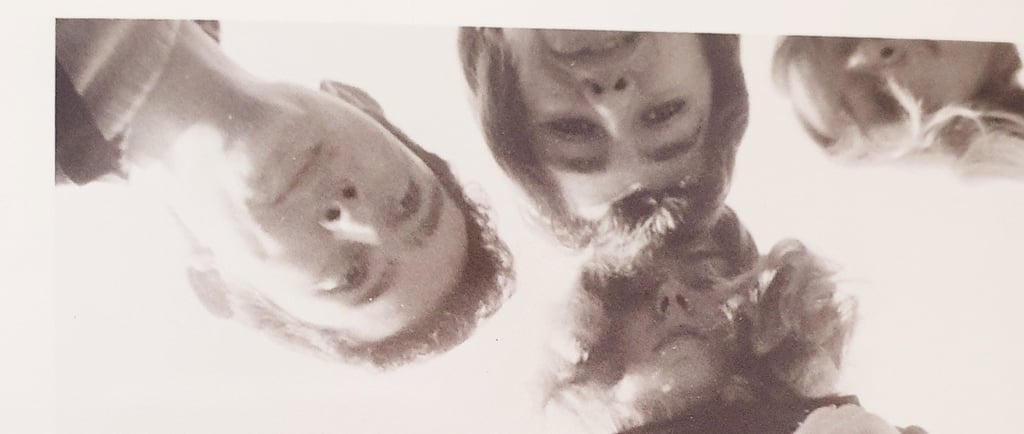Train Your Brain (and that of your team!) III: Creative Leadership or How to Turn Big Ideas into Brilliant Realities… in 7 Steps.
Creative leadership is like being the conductor of an orchestra filled with artists, inventors, and a few mad scientists, together creating a marvelous cacophony. It's all about driving innovation, inspiring imagination, and crafting a work environment where the people are on the center stage —they are the brains, the hearts, and yes, sometimes the “what-if” dreamers of the operation.
11/4/20247 min read


“Creativity is seeing what others see and thinking what no one else ever thought.” (A Einstein)
Creative leadership is like being the conductor of an orchestra filled with artists, inventors, and a few mad scientists, together creating a marvelous cacophony. It's all about driving innovation, inspiring imagination, and crafting a work environment where the people are on the center stage —they are the brains, the hearts, and yes, sometimes the “what-if” dreamers of the operation. At the end, the company would be nothing with the human and the human needs the company to strive (not just economically but being part of sth bigger is vital to our well-being).
Unlike traditional leadership, which might emphasize efficiency and rigidity, creative leadership embraces experimentation, adaptability, and, most importantly, the “discipline of happiness.” Yes, there’s a method to the madness, and that method involves balance, joy, and making sure people are as energized as they are productive.
For those of you who have not yet connected with me; My LinkedIn profile, created in 2003, ends in “Work hard, Play hard”. This is what it drills down to. Move, move, move but bloody well enjoy the ride. It is not about being insane but creative leadership invites the most playful, nutty side of all oahf those involved to the table to harvest the most out there, unconventional ideas
But to truly understand what makes a creative leader, let’s break down the core ingredients, peek into the neuroscience that fuels this leadership style, and toss in a few practical, slightly quirky exercises for good measure.
Essential Ingredients of Creative Leadershipand how to make it Fun
Creative leaders are not your everyday bosses; they are visionaries who inspire, empower, and bring a unique kind of energy to the room.
The movement is forward, the direction is limitless.
They do not only inject joy but create room for every member of the team to grow. Here are a few traits that set them apart:
Innovation and Vision: Creative leaders are forever looking forward. They see possibilities where others see obstacles and have a knack for coming up with fresh ideas that break the mold. Their vision is big, bold, and usually aimed at making positive changes.
Empowerment and Trust: Micromanaging? Never heard of it. Creative leaders know that trust is everything. They empower their teams to take risks, make decisions, and yes, even make mistakes. It is all part of the process—and it builds a culture where people feel confident sharing even the wildest ideas. Never forget! You hired your team in the first place.
Adapting to Change: In today’s fast-changing world, creative leaders thrive on the unknown. They are flexible, resourceful, and skilled at pivoting when plans need a tweak or a total overhaul. Impossible? Just bring it on!
We are a Team: Teamwork is the name of the game. Creative leaders believe that the best ideas come from a mix of perspectives, so they encourage collaboration and create spaces where everyone can contribute their unique insights.
Emotional Intelligence: A creative leader understands people. They are in tune with their team’s emotional needs and know how to build an environment that is supportive and positive. Emotional intelligence is what makes them not just effective but well-loved by their teams. Not all is bright but all contributes to a greater good.
Risk-Taking: Calculated risks are creative leaders’ bread and butter. They understand that without taking chances, groundbreaking ideas simply do not happen. And they cultivate a culture where failures are simply learning experiences on the road to success.
The Discipline of Happiness: The discipline of happiness is about creating a culture where people genuinely enjoy the work they do. It means fostering an atmosphere where positivity, mental health, and well-being are as prioritized as productivity. They are the basis of the human effort towards progress. Creative leaders know that happy teams are productive teams, so they make it part of their mission to maintain joy and balance in the workplace.
Neuroscience Meets Creative Leadership: The Brainy Bits and 7 practical ideas of how to walk the walk.
Creative leadership is not just an art; it is also a science. Neuroscience offers some fascinating insights into how the brain works during creativity, problem-solving, and collaboration. Here is how the brain fuels creative leadership and what that means for keeping happiness, productivity, and those “eureka” moments flowing. Remember, only good practice makes a master. So, give this a shot for at least a month and see what it does to your team.
1. Cultivating Creativity through Balance
Creativity involves alternating between the brain's default mode network (DMN) during daydreaming and the executive control network (ECN) for focus. Regularly switching between these states is essential for generating and refining ideas.
Exercise: Try "Idea Playtime" or The Daydream-Focus Cocktail on a weekly basis—10 minutes to freely brainstorm, all breaks off. Followed by focused time to polish one idea.
2. Problem-Solving through Relaxation
When we're stressed, the brain’s amygdala kicks into high gear, triggering our most basic survival instincts and often sidelining our ability to think creatively. Relaxation and humor help quiet this stress response, letting our brains shift from a reactive mode to a more open, exploratory one. In this "safe" state, the brain’s executive functions—like creativity, problem-solving, and flexible thinking—can flourish without the constraints of survival-based impulses. So, in a way, creating a relaxed environment invites the brain to play, making it easier to innovate.
Exercise: Hold “Silly Idea Sessions” or Just Go With It for A Bit, where team members brainstorm wildly impractical ideas, sparking creativity through playfulness. Remember; this is voluntary. If someone isn't up for the idea just let them listen in. Creativity does not force.
3. Embracing Continuous Learning
The brain’s remarkable neuroplasticity allows for lifelong adaptability, meaning we can continuously learn and grow throughout our lives. To harness this potential, encourage skill-sharing among team members, where everyone has the chance to teach and learn from one another. Not just obviously work-related matters but totally different skills like “Fishing for beginners” or “How to draw”. This not only keeps minds engaged but also fosters a culture of collaboration and innovation, as diverse perspectives spark new ideas. By embracing this practice, you create a dynamic environment that thrives on adaptability and continuous improvement. You might just be surprised about the effect on the level of innovation this has.
Exercise: Host monthly “Skill Swaps” or “Lunch and Learns” where team members teach each other a new skill. Sponsoring a few sandwiches or pizza goes a long way. ;)
4. Managing Stress for Optimal Creativity
High stress levels can cloud judgment and stifle creative thinking, hindering innovation. In contrast, low-stress environments—like open spaces with natural light and comfortable seating—encourage collaboration and open dialogue. Incorporating flexible work hours, regular breaks, and team-building activities can further promote relaxation. By fostering a supportive atmosphere, organizations can unlock their teams' creative potential and drive innovation.
Exercise: Introduce "Unplug Yourself" breaks where team members spend 10 minutes away from screens for mental resets. Especially in remote teams this is becoming more challenging as people feel guilty about getting away from the desk, feeling unproductive. Remind them that we need rest to move.
5. Fostering Psychological Safety for Innovation
Oxytocin, known as the “trust hormone,” fosters collaboration among team members, which is vital for creativity. When individuals feel supported and connected, they are more likely to share their ideas openly, knowing that everyone is doing their best. This enhanced trust not only nurtures innovation but also strengthens the team dynamic, creating an environment where creativity can flourish.
Exercise: Host “Share the Fail” sessions monthly to normalize failure as part of the creative process, building team resilience.
6. Harnessing Emotions in Creative Work
Emotions play a vital role in creativity. Recognizing and sharing emotions can inspire and connect teams.
Exercise: Emotions are vital to creativity, as they can drive motivation and enhance imaginative thinking. When team members recognize and share their emotions, it fosters deeper connections and a supportive environment. This emotional openness sparks inspiration and collaboration, ultimately enhancing creativity and strengthening team relationships.
7. Supporting Collaboration with Empathy
Directly related to the emotions in the prior step is empathy, driven by mirror neurons. It allows individuals to understand and resonate with the emotions and experiences of their teammates. This shared emotional awareness enhances collaboration by fostering a sense of connection and mutual respect, enabling smoother communication and problem-solving. As a result, empathetic teams can navigate challenges more effectively, creating a more harmonious and productive work environment.
Exercise: “Empathy Mapping” involves team members reflecting on a recent work challenge and sharing their feelings with a partner to create a simple empathy map that outlines their experiences. This straightforward exercise promotes understanding and improves collaboration by helping team members recognize each other's perspectives.
Why Creative Leadership Matters
Creative leadership is not just about bringing new ideas to the table; it is about creating an environment where innovation, productivity and happiness coexist. Today’s fast-paced world requires leaders who can think differently and keep their teams inspired and motivated, which is why creative leadership shines brightest when it balances vision with the “discipline of happiness”. There is a whole new generation looking up to leaders who place human back into work.
When leaders foster a culture of joy and mental well-being alongside productivity, they’re not just boosting creativity—they’re building resilience, loyalty, and a sense of purpose. This approach is especially valuable in industries that thrive on big ideas, like tech, design, and entertainment.
And Why Is Injecting Joy So Important
From a neuroscience perspective, joy activates the brain's reward system, releasing neurotransmitters like dopamine that enhance motivation, creativity, and overall cognitive function. When employees experience joy at work, it reduces stress hormones such as cortisol, which can hinder creative thinking and problem-solving. This positive emotional state fosters a sense of safety and collaboration, encouraging risk-taking and innovative ideas. Ultimately, a joyful workplace boosts engagement and productivity, driving sustained innovation within the company.
To inject joy as a creative leader, foster an uplifting environment by celebrating small wins and encouraging team members to share their achievements. Incorporate fun, engaging activities like our team-building exercises or creative brainstorming sessions that allow for playfulness and exploration. Finally, lead by example; demonstrate your own joy and enthusiasm for work, inspiring your team to embrace a positive mindset and a collaborative spirit.
Lead with Creativity, Discipline and JOY
Creative leadership isn’t just a role; it’s a lifestyle. It’s about dreaming big, embracing challenges, and keeping joy as much a part of the process as results. By understanding the neuroscience of creativity, tapping into the discipline of happiness, and trying out a few quirky team-building exercises, creative leaders can create a culture that’s both innovative and enjoyable.
In the end, a great creative leader is like a scientist with a smile—a visionary who brings the best out of their team not by just pushing harder but by cultivating joy, discipline, and a willingness to take risks. Because let’s face it, without a little fun, all the innovation in the world wouldn’t feel quite so creative.
Are you ready to think and inspire thoughts that no one has ever thought?

